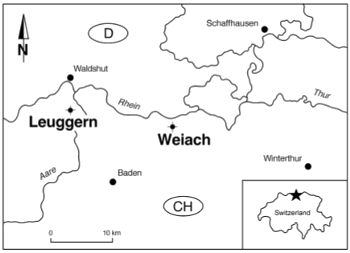Flowers
November 1, 2013
Our home
library was one information resource I had in
childhood in those dim days before the
Internet. My
father had taken some introductory
college courses funded by the
GI Bill before he decided to follow his own father's
profession as a
carpenter/
contractor. For that reason, I had a college
chemistry textbook, along with some
mathematics textbooks, at hand in my own house.

My father (center), with two of his three sisters,
circa 1926.
Will your digital photos survive for 87 years?
DVDs have an assured lifetime of less than fifteen years)
Some of the chemical
terminology confused me, one example being "
flowers of sulfur." I knew that sulfur was a
foul-smelling chemical, so how could it be associated with
sweet-smelling flowers? As it turns out, the
petal-like quality of the flakes of sulfur in this
sublimed form of sulfur is the reason for the name.
Flowers exist as a way to entice
insects to help with
pollination, so we wouldn't expect to find flowers in the
geologic record until after the time of the first insects. The earliest evidence of an insect, the
Rhyniognatha hirsti, is found in the
Rhynie chert, a sedimentary deposit dated to the
Devonian period, which extended from about 420-360
million years ago.[1]
Rhyniognatha hirsti is not that simple an insect, since it has characteristics in common with
winged insects; so, it's reasonable to assume that insects first appeared at an earlier time, probably in the
Silurian period, which extends as far back as 445 million years ago.[1] A large radiation of insects, the
beetles, occurred about 300 million years ago, and flying insects appeared about 250 million years ago.
Peter A. Hochuli, a paleontologist at the University of Zürich (Zürich, Switzerland) and
Susanne Feist-Burkhardt, a consulting geologist in
Ober-Ramstadt, Germany, have just published a paper with evidence that flowering plants appeared at least as early as the
Middle Triassic period, about 247.2-242.0 million years ago.[2-3] Their evidence is the discovery of
fossil pollen grains in northern
Switzerland, at two
core-drilled samples from
Leuggern and
Weiach (see
map). Pollen grains are small, robust and numerous, so they fossilize more easily than other
plant parts, such as
leaves and flowers.

Core-drilling sites at Leuggern and Weiach in northern Switzerland.
(Fig. 1 of ref. 2, published under a Creative Commons License.)[2)]
Previously, fossilized pollen from flowers was found in the geologic record only since the
Early Cretaceous, about 140 million years ago, so that time has been the earliest known for the existence of flowers. The present study pushes this date back 100 million years earlier.[3]
The pollen grains found in the Northern Switzerland core samples are much like those of early
angiosperm (flowering plant) pollen of the Early Cretaceous, except for their having an extremely thin inner layer.[2] Six pollen types were identified using
Confocal Laser Scanning Microscopy, and
sedimentological evidence suggests a wide
ecological range for these plants.[2]

Middle Triassic pollen grains found in northern Switzerland. These grains were recovered from the Weiach core sample at 950.82 meters (left) and 903.02 meters (right). The size of the left specimen is 32.0 x 46.0 μm, and the size of the right specimen is 31.5 x 41.5 μm. (Image sources, left and right, Peter A. Hochuli and Susanne Feist-Burkhardt, University of Zürich )
These
data confirm a 2004 study by these same authors in which Middle Triassic pollen was found in cores from the
Barents Sea, south of
Spitsbergen. Says Hochuli, "We believe that even highly cautious scientists will now be convinced that flowering plants evolved long before the Cretaceous."[3]
As we fast-forward to the
modern era, we find that
bees, prolific pollinators that evolved about a hundred million years ago,
are in decline for many reasons. A recent study by scientists at the
University of Southampton (Southampton, UK) has revealed another problem for bees.
Nitric oxides found in
vehicle exhaust diminishes bees' response to floral scents.[4-5]
In
experiments,
diesel exhaust exposure to a
synthetic blend of floral chemicals significantly lowered the
concentration of the scents, and it even rendered two scent components undetectable.[4] University of Southampton
neuroscientist,
Tracey Newman, an author of the study, is quoted by the
BBC as saying,
"Bees need to decipher the chemical messages they're getting [from flowers] to be able to home in on the flowers they know will give the best yield [of nectar]."[5]
So, the hundred million year
coevolution of the flower-bee ecosystem is being disrupted by a technology developed just a little more than a hundred years ago.
References:
- Michael S. Engel and David A. Grimaldi, "New light shed on the oldest insect," Nature, vol. 427, no. 6975 (February 12, 2004), pp. 627-630.
- Peter A. Hochuli and Susanne Feist-Burkhardt, "Angiosperm-like pollen and Afropollis from the Middle Triassic (Anisian) of the Germanic Basin (Northern Switzerland)," Front. Plant Sci., vol. 4, no. 344 (October 1, 2013), doi: 10.3389/fpls.2013.00344.
- New fossils push the origin of flowering plants back by 100 million years to the early Triassic, University of Zürich Press Release, October 1, 2013.
- Robbie D. Girling, Inka Lusebrink, Emily Farthing, Tracey A. Newman and Guy M. Poppy, "Diesel exhaust rapidly degrades floral odours used by honeybees," Scientific Reports, vol. 3, article no. 2779 (doi:10.1038/srep02779, October 3, 2013).
- Victoria Gill, "Bees' foraging for flowers 'hampered by diesel exhaust'," BBC News, October 3, 2013.
Permanent Link to this article
Linked Keywords: Library; childhood; Internet; father; college; GI Bill; profession; carpenter; general contractor; chemistry; textbook; mathematics; sister; digital photography; digital photo; CD-R; Recordable compact disc; lifespan; lifetime; terminology; flowers of sulfur; odor; foul-smelling; chemical compound; chemical; sweet-smelling; petal-like; sublimation; sublime; flower; insect; pollination; geologic record; Rhyniognatha hirsti; Rhynie chert; Devonian; period; million years; pterygota; winged insects; Silurian; beetle; Peter A. Hochuli; Susanne Feist-Burkhardt; Ober-Ramstadt, Germany; Middle Triassic; fossil; pollen grain; Switzerland; core drill; core sample; Leuggern; Weiach; map; plant; leaf; leaves; Leuggern; Weiach; Creative Commons License; Early Cretaceous; angiosperm; confocal Laser Scanning Microscopy; sedimentology; sedimentological; ecological niche; ecological range; meter; data; Barents Sea; Spitsbergen; modern history; modern era; bee; pollinator decline; University of Southampton (Southampton, UK); Nitric oxides; vehicle exhaust; experiment; diesel engine; chemical synthesis; synthetic blend; concentration; neuroscientist; Tracey Newman; BBC; coevolution.